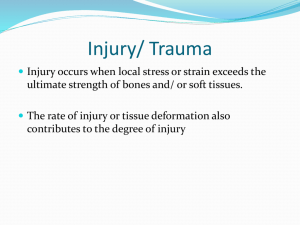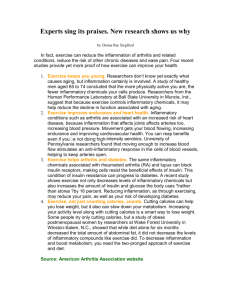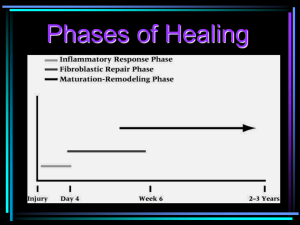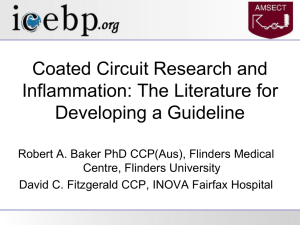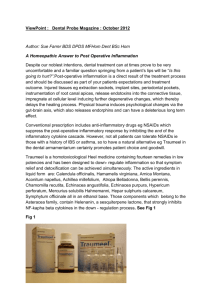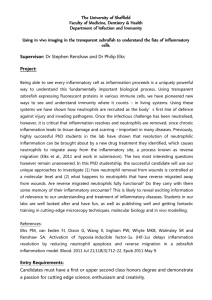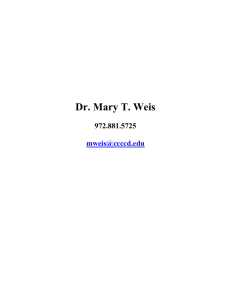Kelly`s written instructions
advertisement
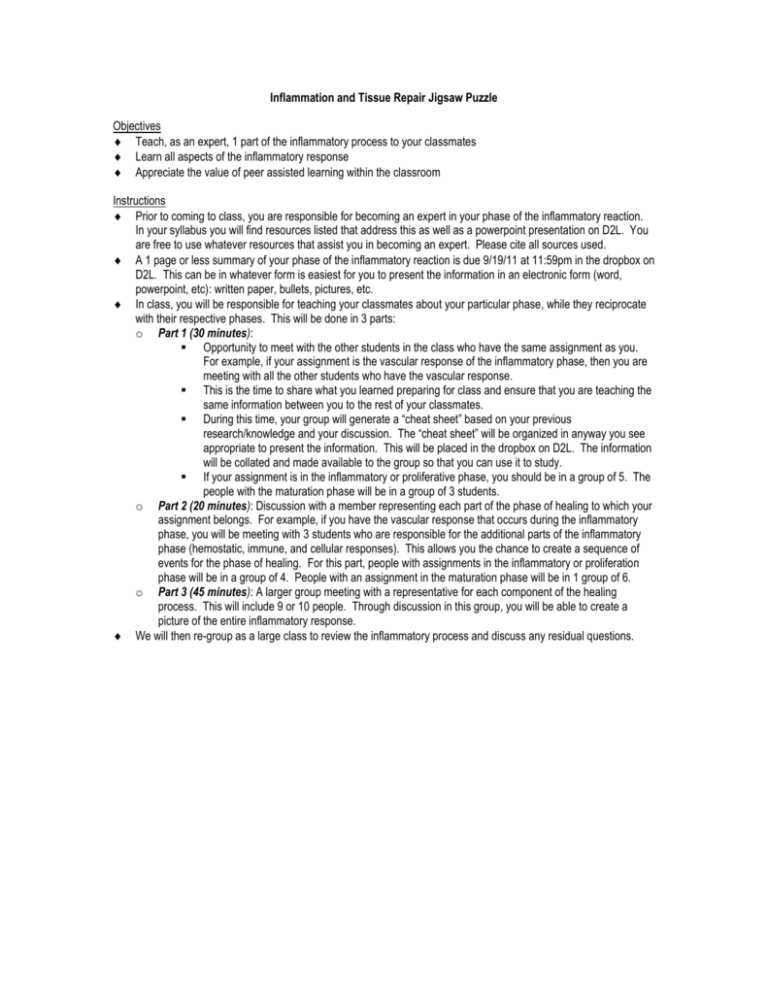
Inflammation and Tissue Repair Jigsaw Puzzle Objectives Teach, as an expert, 1 part of the inflammatory process to your classmates Learn all aspects of the inflammatory response Appreciate the value of peer assisted learning within the classroom Instructions Prior to coming to class, you are responsible for becoming an expert in your phase of the inflammatory reaction. In your syllabus you will find resources listed that address this as well as a powerpoint presentation on D2L. You are free to use whatever resources that assist you in becoming an expert. Please cite all sources used. A 1 page or less summary of your phase of the inflammatory reaction is due 9/19/11 at 11:59pm in the dropbox on D2L. This can be in whatever form is easiest for you to present the information in an electronic form (word, powerpoint, etc): written paper, bullets, pictures, etc. In class, you will be responsible for teaching your classmates about your particular phase, while they reciprocate with their respective phases. This will be done in 3 parts: o Part 1 (30 minutes): Opportunity to meet with the other students in the class who have the same assignment as you. For example, if your assignment is the vascular response of the inflammatory phase, then you are meeting with all the other students who have the vascular response. This is the time to share what you learned preparing for class and ensure that you are teaching the same information between you to the rest of your classmates. During this time, your group will generate a “cheat sheet” based on your previous research/knowledge and your discussion. The “cheat sheet” will be organized in anyway you see appropriate to present the information. This will be placed in the dropbox on D2L. The information will be collated and made available to the group so that you can use it to study. If your assignment is in the inflammatory or proliferative phase, you should be in a group of 5. The people with the maturation phase will be in a group of 3 students. o Part 2 (20 minutes): Discussion with a member representing each part of the phase of healing to which your assignment belongs. For example, if you have the vascular response that occurs during the inflammatory phase, you will be meeting with 3 students who are responsible for the additional parts of the inflammatory phase (hemostatic, immune, and cellular responses). This allows you the chance to create a sequence of events for the phase of healing. For this part, people with assignments in the inflammatory or proliferation phase will be in a group of 4. People with an assignment in the maturation phase will be in 1 group of 6. o Part 3 (45 minutes): A larger group meeting with a representative for each component of the healing process. This will include 9 or 10 people. Through discussion in this group, you will be able to create a picture of the entire inflammatory response. We will then re-group as a large class to review the inflammatory process and discuss any residual questions. Key Assignment Inflammation: vascular response Inflammation: hemostatic response Inflammation: cellular response Inflammation: immune response Proliferation: epithelialization Proliferation: collagen production Proliferation: wound contraction Proliferation: neovascularization Maturation: general process Maturation: collagen types & importance A B C D E F G H I J Jigsaw #1 Group: Includes everyone with the same assignment as you (i.e. vascular response or all “A”) Jigsaw #2 Group: Grouped by stages of the inflammatory process (inflammatory, proliferation, maturation), with one representative of each part of the phase in each group Inflammatory stages: 1-6 Proliferation stages: 7-12 Maturation stages: 13-15 Jigsaw #3 Group: 1 representative from each phase of the inflammatory process.

